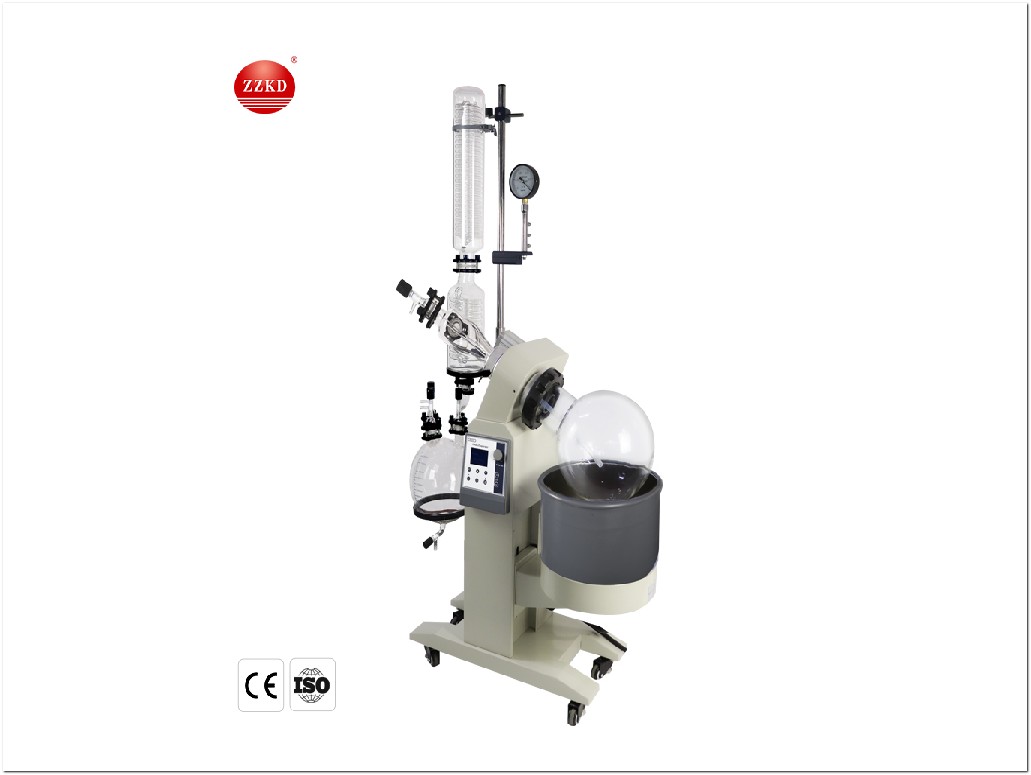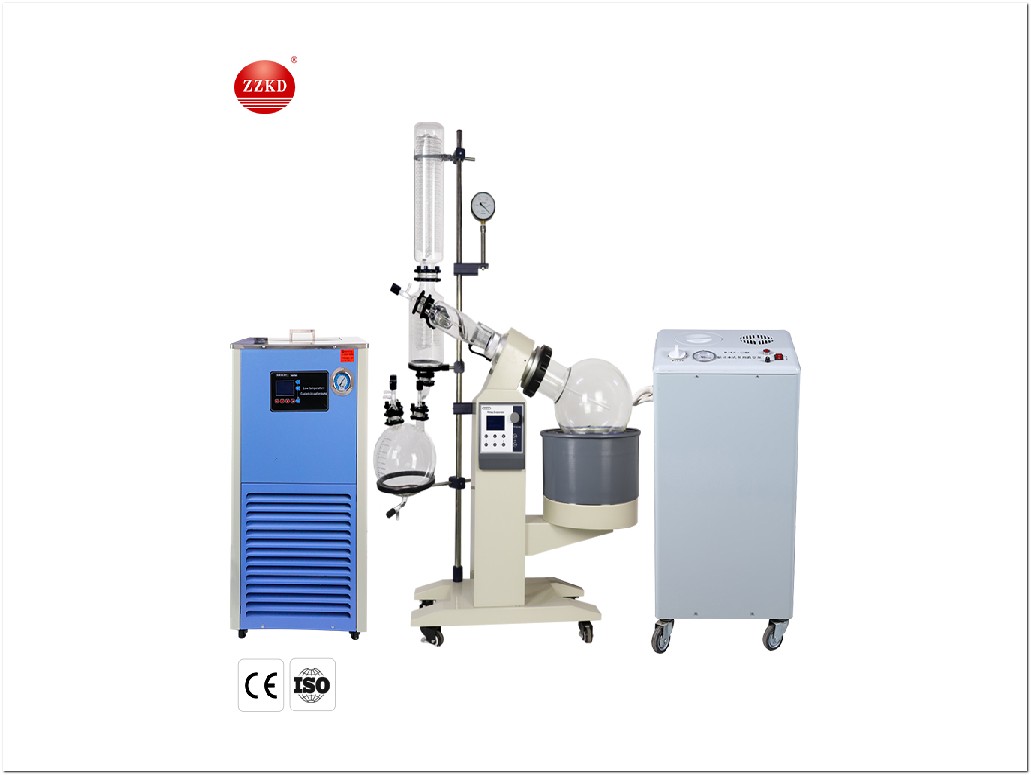How To Prevent Spray In Rotary Steam?

1. Methods to prevent solvent spray during rotary evaporation:
a. The temperature should not be too high, and the temperature of the water bath should not exceed 30 degrees Celsius.b. Don't pack too much. If it is a low boiling point solvent, you can consider adjusting the vacuum degree slowly without heating.
c. Replace the recycling bottle with a relatively large capacity. Generally, the smaller the capacity of the recycling bottle, the easier it is to bump! !
d. The vacuum pressure should not be too high, people should not leave during the rotary steaming process, always pay attention, and open the vacuum valve immediately if there are signs of spraying.
e. The solvent with low boiling point and easy to bump and spray can be properly vented and pressurized by operating the rotary steam vent with fingers.
f. I usually spin the DCM outside the water bath until water mist appears outside the flask, and then gradually lower it and gradually increase the contact volume of the water bath until it is stable and not bumping.
g. Use the anti-boil ball of anti-shock material, which can be poured back after spraying. This needs to ensure that the blast ball is clean, so wash it before each use!
2. How to choose a suitable rotary steaming temperature
One of the most important aspects of How To Use The Rotary Evaporator is to choose the best use temperature of the rotary steamer, known as the golden "Δ20°C rule". In order to fully condense the vapor, the temperature of the cooling circulator should be set to about 20°C lower than the vapor temperature. For example a solvent vapor temperature of 30°C is generated at a bath temperature of 50°C, followed by condensation at 10°C.3. How to choose the rotary evaporation pressure
Rotary Evaporator Vacuum Pressure and temperature are very important. Generally speaking, there is a linear relationship between water bath temperature and evaporation rate. The more energy you use in the evaporation process and the more energy you remove from the condensing part at the same time, the more efficient the distillation will be. The premise is that you also need to take care that the condenser has sufficient cooling capacity and is stable under pressure.Rotary evaporator is also called rotary evaporator. It is mainly a common laboratory equipment composed of motors, distillation bottles, heating pots, condenser tubes and other parts.

Basic structure and principle:
The working principle of rotary evaporation is simply to make the distillation flask rotate at a constant speed at the most suitable speed through the motor control to increase the evaporation area, and at the same time, the evaporation flask is in a negative pressure state through the vacuum pump to reduce the boiling point of the solution and speed up the evaporation. speed. Vacuum evaporators are used as a method of evaporation, because reducing the pressure above the liquid will reduce the boiling point of the component liquids in it, thereby speeding up the evaporation rate to a certain extent. The evaporating flask is placed in a water bath and heated at a constant temperature while it is rotating, and the solution in the flask is heated, diffused and evaporated under the condition of negative pressure in the rotating flask. The evaporation system can be sealed and decompressed to 400 to 600 mm Hg, the solvent in the distillation flask is heated with a heating bath, and the heating temperature can be close to the boiling point of the solvent, and it can be rotated at a speed of 50 to 160 rpm to form a film of the solvent Increase the evaporation area, and in addition, under the action of the high-efficiency condenser tube, the hot vapor can be quickly liquefied to speed up the distillation rate.Typically in rotary evaporation applications, the component liquid of interest is the research solvent that one wishes to remove from the sample after extraction, such as after a step in natural product isolation or organic synthesis. The liquid solvent can be removed without excessive heating. Often Complex and sensitive mixed solvent.
Mini rotary evaporator is commonly and conveniently used to separate "low boiling" solvents, such as n-hexane or ethyl acetate, from compounds that are solid at room temperature and pressure. However, careful application also allows solvent to be removed from samples containing liquid compounds if there is minimal co-evaporation (azeotropic behavior) and sufficient difference in boiling point at the selected temperature and reduced pressure.
The main components of rotary evaporation:
1. Rotate the motor to drive the evaporating bottle through rotation.2. Evaporation pipeline, the support shaft for the rotation of the evaporation bottle, and the vacuum-sealed pipeline for extracting the steam from the material.
3. The vacuum system reduces the Rotary Evaporator Vacuum Pressure and reduces the boiling point of the material.
4. Heating bath, usually use water or oil to heat the material.
5. Condenser, in order to speed up the condensation efficiency, it is usually made into a double snake surround type, and then a condensing agent such as dry ice and acetone is added to condense the sample.
6. The condensed water collection bottle at the bottom of the condenser is used to capture the distillation solvent after recondensation and collect the sample.
7. Lifting device, a mechanical or motorized mechanism that quickly lifts the evaporating flask from the heating bath.
ZZKD long-term spot sales of rotary evaporator! ! !




